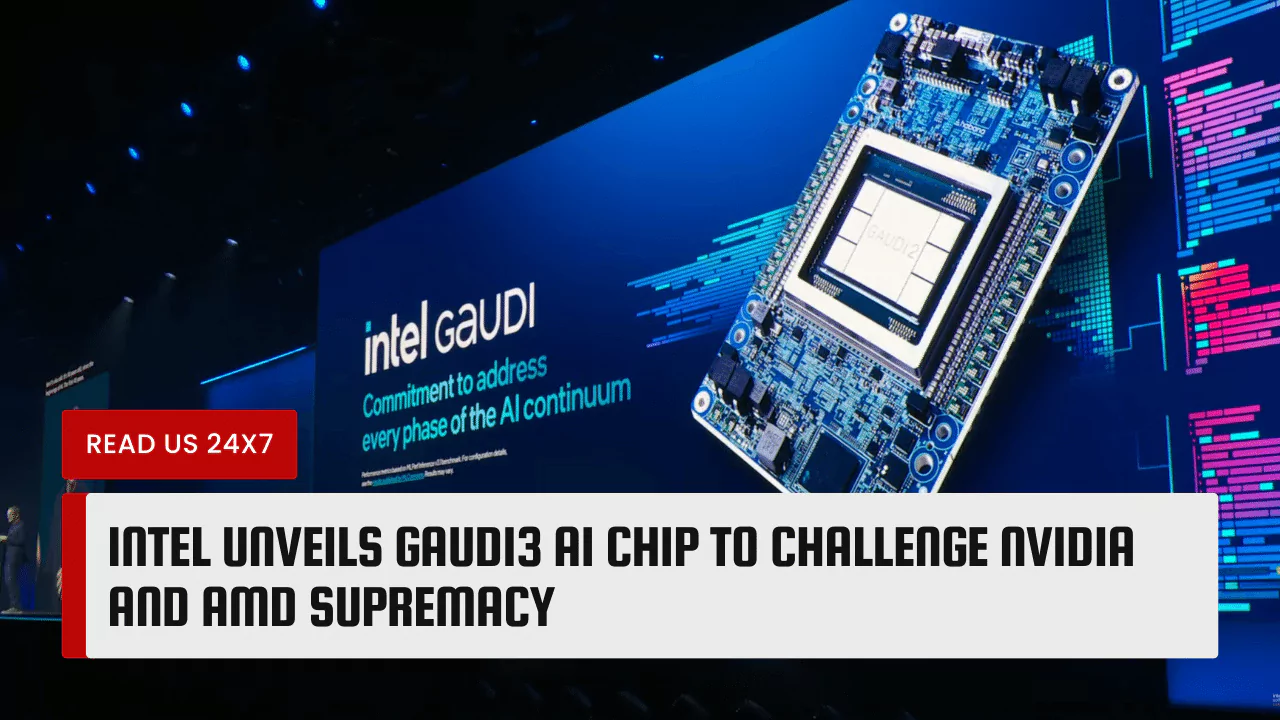To take on Nvidia and AMD in the generative AI software business, Intel—the biggest chipmaker in the world—announced a new AI chip named Gaudi3. An area of artificial intelligence known as “generative AI” can take pre-existing data and use it to generate new media files like photos, texts, songs, and movies. Several well-known generative AI models use Nvidia’s cloud-based graphics processing units (GPUs), including OpenAI’s ChatGPT. Because of this, the stock price of Nvidia has increased by around 230% this year, while the share price of Intel has increased by 68%. Intel and AMD are among the vendors that have introduced generative AI chips in an effort to compete with Nvidia.
Overview of Intel’s New AI Chip
Gaudi3
Gaudi3 is Intel’s latest AI chip that will be available next year. It is based on a 7nm process technology and has 64 billion transistors. It can run up to 16 teraflops of performance and supports up to 64 GB of memory. It also has a specialized neural processing unit (NPU) that can accelerate generative AI applications.
Competitors
Gaudi3 will compete with rival products from Nvidia and AMD that run powerful and energy-intensive AI models. Nvidia’s H100 is the preferred choice for companies that use large clusters of chips to run AI applications in the cloud. It has 10 billion transistors and can deliver up to 200 teraflops of performance. AMD’s MI300X is an upcoming chip that will be launched in 2024. It will have 32 billion transistors and can offer up to 128 teraflops of performance.
Impact on the Market
Addressing Generative AI Software
Gaudi3 aims to address the growing demand for generative AI software that can create realistic and diverse content from data. Generative AI software can be used for various purposes, such as entertainment, education, marketing, design, and research. For example, generative AI software can create realistic images of faces or landscapes from sketches or descriptions.
Potential for Success
Gaudi3 has the potential to succeed in the market by offering a competitive edge over its rivals in terms of performance, efficiency, scalability, and cost. Intel claims that Gaudi3 can deliver up to four times more performance per watt than Nvidia’s H100 and up to twice as much as AMD’s MI300X. Moreover, Intel says that Gaudi3 can support more memory capacity than its competitors and enable faster training and inference times for generative AI models.
Future Prospects
Upcoming Core Ultra 9 Chip
Intel has also unveiled Core Ultra processors, specifically engineered for Windows laptops and personal computers. These chips are equipped with a specific Neural Processing Unit (NPU) that enables faster execution of artificial intelligence (AI) programs. Their launch is anticipated to occur in early 2024.
Competition with TSMC
Intel faces stiff competition from TSMC, the world’s largest contract chipmaker, which supplies chips to both Nvidia and AMD. TSMC has been investing heavily in advanced chip technologies, such as EUV lithography, which enables smaller transistors at higher speeds. TSMC also has a strong presence in China, where it supplies chips to many domestic tech companies. Intel hopes to regain its leadership position in the chip market by offering innovative products like Gaudi3.



